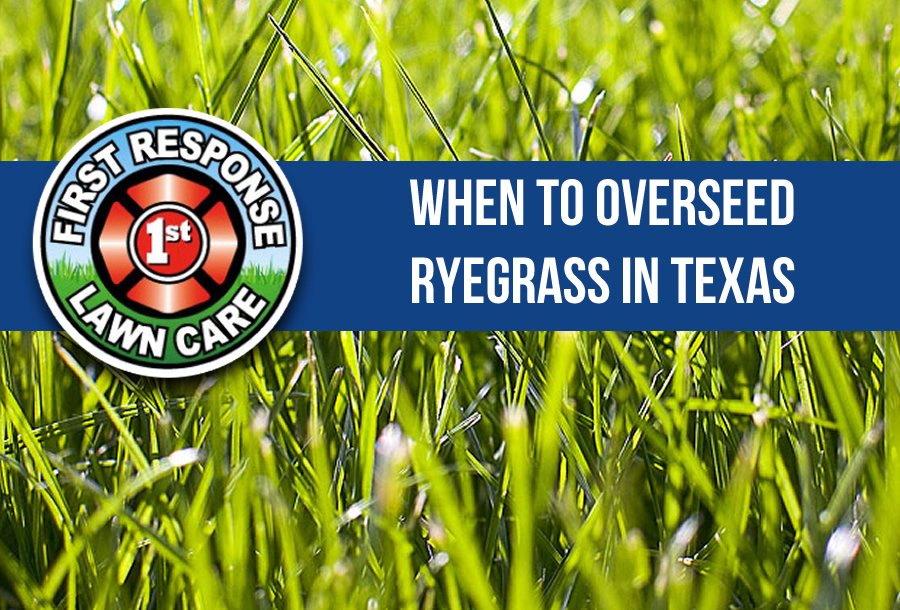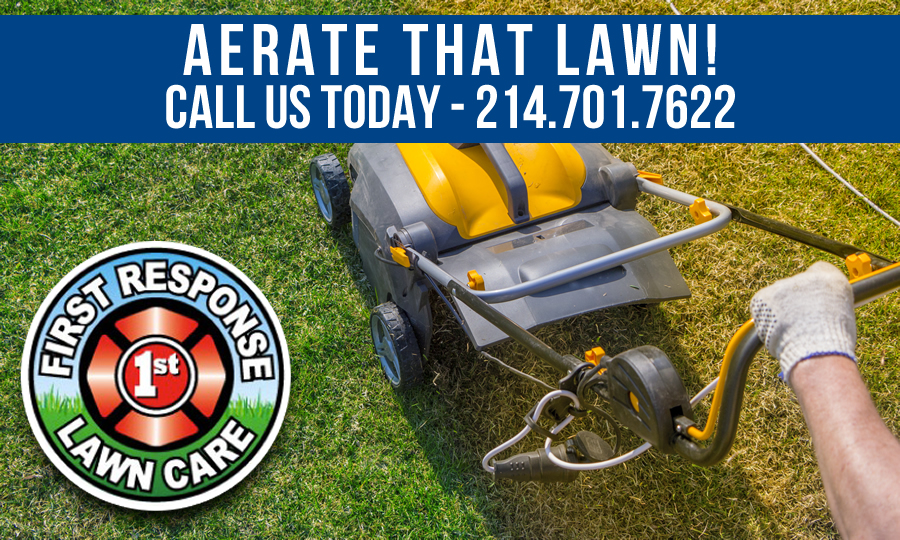
by admin | Oct 9, 2018 | Herbicides
October and November are important months for your Texas lawn.Most annual winter grasses and weeds that plague lawns in late winter and early spring begin to germinate in September and October.
The best way to stop them in the lawn is to apply a pre-emergence herbicide before the weed seeds start to germinate. Now is a good time to work on this problem as well. Pre-emergent herbicides are chemicals that kill weed seedlings as they germinate. They are not effective once weeds grow beyond the seedling stage. They should be applied according to the label in a uniform broadcast treatment, followed by at least 1/2 inch of rain or irrigation to move the product down to the soil where it is activated.
Post-emergence herbicides are used for weeds which have already begun to show up. You have to be careful with these because most of them can damage St. Augustine grass if temperatures are in the mid to upper 80’s. There is a “window” of time in the fall to catch the broadleaf winter weeds. The earlier you catch them the better. Just watch out for days which are too warm. Also be careful not to get them on desirable flowers, shrubs, etc. They don’t know the difference between a broadleaf weed and a broadleaf ornamental!
Over-seeding is generally not recommended on St. Augustine lawns. It competes with the grass for sunlight, nutrients and water. The additional competition from over-seeding slows spring recovery of the turf. If your turf is stressed or weak already, avoid over-seeding altogether. It will only make the problem worse.
Remember to reduce your watering as temperatures start to cool off over the next few months. Turf will not need the typical 1” per week watering. Excessive water will only be wasted. Reducing or turning off irrigation will not only save water but will reduce your water bill.
If you need help with your pre and post emergent application, call First Response Lawn Care Rockwall today at (214) 701-7622.

by admin | Sep 27, 2018 | overseeding ryegrass rockwall
Overseeding with Ryegrass – is this a good or bad idea? To answer that question you might first consider the following:
Do you have Bermuda grass?
Is the area you want to overseed a full sun area?
Are you trying to use fewer herbicides?
Do you mind mowing in the winter?
Are you prepared to use more water?*
If you answered yes to all of these questions then you may want to overseed your lawn. *Be aware that some city’s watering restrictions may also include restrictions on overseeding in the winter.
Bermuda is the best grass to overseed because it is the easiest to prepare to be seeded. Bermuda can be scalped so that the seed will make good contact with the soil, which is critical for germination. At. Augustine, on the other hand, is the most difficult to prepare because you cannot scalp it without damaging the stolons. Also, St. Augustine is thick, reducing the germination of ryegrass and requiring a higher seedling rate. Finally, Brown Patch can be very damaging to St. Augustine in the fall – a result of overwatering. Unfortunately, when overseeding with ryegrass, frequent watering is necessary to allow for germination, which often causes a severe outbreak of Brown Patch in the lawn.
It is recommended to only overseed ryegrass in full sun. Shady areas will transition slowly back to perennial summer grasses causing it undue stress.
Overseeding with ryegrass requires less use of herbicides. Overseeding will reduce the need for a fall pre-emergent herbicide. Weeds are at their worst in early spring before the summer grasses green-up. A healthy stand of ryegrass will keep spring weeds to a minimum, thereby reducing chemical usage.
Overseeding with ryegrass requires more mowing. Ryegrass will need to be mowed every 10 to 14 days when temperatures are under 50 F and ever seven days when temperatures are over 50 F. A benefit of regular mowing is that you keep weeds from flower and thus spreading.
Overseeding with ryegrass requires more water. Germination will require watering three to six times daily at anywhere from 30 seconds to one minute at a time until germination occurs. Then a watering schedule of one to two times daily for seven days will keep the newly germinated seedlings from drying out. After one week, cut back to watering three times per week over a two week period at three minutes per watering. The ryegrass should then be established enough to go to once-a-week watering. If you live in a city that restricts watering to 2 x per week or less with an automated system, you’ll have to hand water to achieve successful germination.
Perennial or Annual Ryegrass?
If you decide to overseed you have one more decision to make: Perennial vs. Annual. Perennial is typically preferred by professional grounds keepers for its superior dark green color and slower growth. Annual is a cheaper option and germinates three to eight days faster than perennial ryegrass. Also, annual ryegrass has a tendency to be very wet and hard to mow.
Transitioning Back to Warm-Season Grass
Ryegrass will die when the weather becomes hot in late spring, but the warm-season grasses will have suffered due to increased competition for water, nutrients and light. There are several management practices that encourage transition back to warm-season grass. Do not fertilize ryegrass in early spring, as this promotes competition with warm-season grass. Once the underlying grass greens up in spring, mow the ryegrass as closely as possible (without scalping the underlying grass.) This opens up the ryegrass canopy and allows light to reach the warm season grass. Once the warm-season grass begins vigorous growth, resume your normal lawn care program.

by admin | Sep 14, 2018 | Aeration, Fertilize Treatments Rockwall
September could very well be the best month of the year to fertilize your lawn. We know you’ve heard this before in other months, but this is THE MONTH for fertilization. Here are our top tips for September lawn maintenance in Texas.
Dethatch Your Lawn
A thin, half-inch layer of thatch is normal and healthy for a lawn, but thatch that’s deeper than 1 inch should be removed as it prevents air, light and water from reaching the turf’s root zone. As thatch accumulates, there is a tendency for root growth to occur primarily in the thatch layer rather than the soil. This may result in a weakened, poorly rooted turf that is prone to stress injury. Thatch also makes an excellent breeding ground for harmful insects and disease organisms. For more information about dethatching, call First Response Lawn Care at (214) 701-7622, your lawn care service provider in Rockwall, Caddo Mills, Royse City, Fate, Rowlett, Forney, Heath, Sachse, Wylie, Lavon, Garland and surrounding areas.
Plant
Plant St. Augustine sod by mid-month to allow time for deep root growth before the first freeze. Bermuda seed should also be sown no later than mid-September, but sod can be planted later in month, if needed.
Aerate Your Lawn
After detaching your lawn, it’s a good idea to follow through with aeration. Aerating your lawn allows more nutrients and water to reach the grass root zone. Fall is a great time to do it as grass plants are beginning to store food for next spring.
These are only a few things you can do during September to keep your lawn healthy and strong for the pending winter season.
Apply Pre-emergent Herbicide
Apply a pre-emergent herbicide in September to prevent winter grassy weeds such as annual bluegrass, rescue grass and rye. (Don’t use if you’re over-seeding your turf.) Gallery products prevent annual broad-leafed weeds.
Pre-emergents need to be applied before the weeds actually sprout and start growing. You can apply them on the same day, then water them both onto the soil’s surface at the same time, but do not try to mix them in the fertilizer spreader. Make two separate passes across the lawn.
First Response Lawn Care can take care of all your lawn care maintenance aeration, fertilization and more in Rockwall Texas and surrounding areas.

by admin | Sep 7, 2018 | Aeration, Fall Gardening in North Texas, Irrigation Rockwall, Mulch
In the fall when temperatures are more moderate, it’s a great time to perform lawn maintenance and prep. Here are some fall lawn tips for North Texas on how to cultivate the perfect lawn, and radiant flower beds here in Texas that will have you sitting back and relaxing with minimal regular maintenance.
Check Irrigation
Use water systems which are low profile to ensure you’re waste of water is minimal and that the plants receive the majority of it. Be cognizant of plants that require greater amounts of water than others, and try to group them in the same locations. Rather than frequency, aim for an increased length of time in watering. And, finally, ensure your equipment is properly cleaned, functioning, and covering all areas for which water is required. Efficiency increases effectiveness. If you need a checkup of your irrigation system, call First Response Lawn Care!
Mulch and Compost
The effective use of mulch and compost in your soil beds will go a long way toward providing the natural nutrients which are required by your plants, thereby reducing the need for extra fertilizer. They also help to reduce weed growth, and some organic mixes can increase water and oxygen retention as well as carbon-trapping. The best time for compost placement is in the spring, however, mulching can be done in the fall to help protect the root systems of your plants.
Prune
Prune with a purpose. Do not “top” any trees or shrubs including crape myrtles. Never leave stubs. Cut flush against remaining branches on shrubs and along the branch collar on trees. Peach and plum trees should be pruned to encourage horizontal branching, remove any strongly vertical shoots.
Continue to prune evergreen trees such as magnolias, live oaks, and wax myrtles to minimize possible ice damage. Re-shape evergreen shrubs and shade trees, as needed (even during dormant winter months).
Avoid pruning spring-flowering trees and shrubs during the fall, as pruning now will reduce spring flowers. Continue to cut back spent flowers of annuals and perennials to encourage fall blooming until first frost. Trim dead or damaged wood from trees and shrubs but best advice is to avoid drastic pruning.
If you need help with any of the above fall gardening prep, call First Response Lawn Care at (214) 701-7622!.

by admin | Aug 30, 2018 | Aeration
Regular maintenance tasks go a long way in creating a thicker, healthier lawn. But jobs typically reserved for once a year can play a significant role in supporting smaller steps taken across the months. Aerating lawns to relieve soil compaction and enhance grass growth is a regular annual task. Almost any lawn can benefit from aeration when it’s timed well and done properly.
Why Aerating Helps Lawns
Grass roots need air, water and nutrients to grow thick, deep and strong. When soil becomes compacted, even slightly, it inhibits the flow of the essentials that support thicker, healthier turf growth. A layer of compacted soil just 1/4 to 1/2 inches thick can make a significant difference in the health and beauty of your lawn. Aeration creates holes down into the soil to alleviate compaction so air, water and nutrients can reach grass roots.
Deprived of their basic needs by compacted soil, lawn grasses struggle in stressful situations, such as heat and low rainfall, and lose their healthy, rich color. Grasses gradually thin and eventually die out completely, for lack of the oxygen, water and nutrients available just inches away. Even a single aeration session can open the avenue for these essentials to reach their mark and put your lawn back on an upward trend.
When Lawns Need Aeration
It may not seem your lawn could get compacted, but it happens easier than you may think. Outdoor entertaining or yard play by kids and pets can leave all or part of your lawn compacted. Parts of Texas have heavy clay soil and annual aeration is needed to keep your lawn from becoming thin and weak.
Dethatching and aerating are two different tasks, but they often go hand in hand. Thatch is the layer of decomposing organic matter that forms right at the lawn surface, between soil and grass. When thatch gets more than 1/2 inch thick, it works like compaction to prevent the flow of air, water and nutrients grasses need. Aggressive spreading grasses, such as Kentucky bluegrass in northern lawns and Bermudagrass down south, form more thatch than many other grass types. Aeration helps penetrate and reduce thatch buildup or prep it for removal through dethatching.
If your grass often looks stressed and your soil is hard to the touch or rainwater puddles up where it used to be absorbed, you may have compaction problems. Confirm your suspicions with a simple “screwdriver test.” Take a regular screwdriver and stick it into your lawn’s soil by hand. It should slide in fairly easily. If you meet resistance, your soil is compacted, and aeration can help.
After your lawn is aerated, let soil plugs or extra soil dry where they fall. They’ll break down in rain or crumble the next time you mow, adding beneficial soil and organic matter to your lawn surface.
By adding aeration to your annual task list, you help ensure your lawn can reach its full potential for thickness, health and beauty. First Response Lawn Care is committed to providing you with the finest in grass seed and lawn care products to help you achieve your lawn goals.





